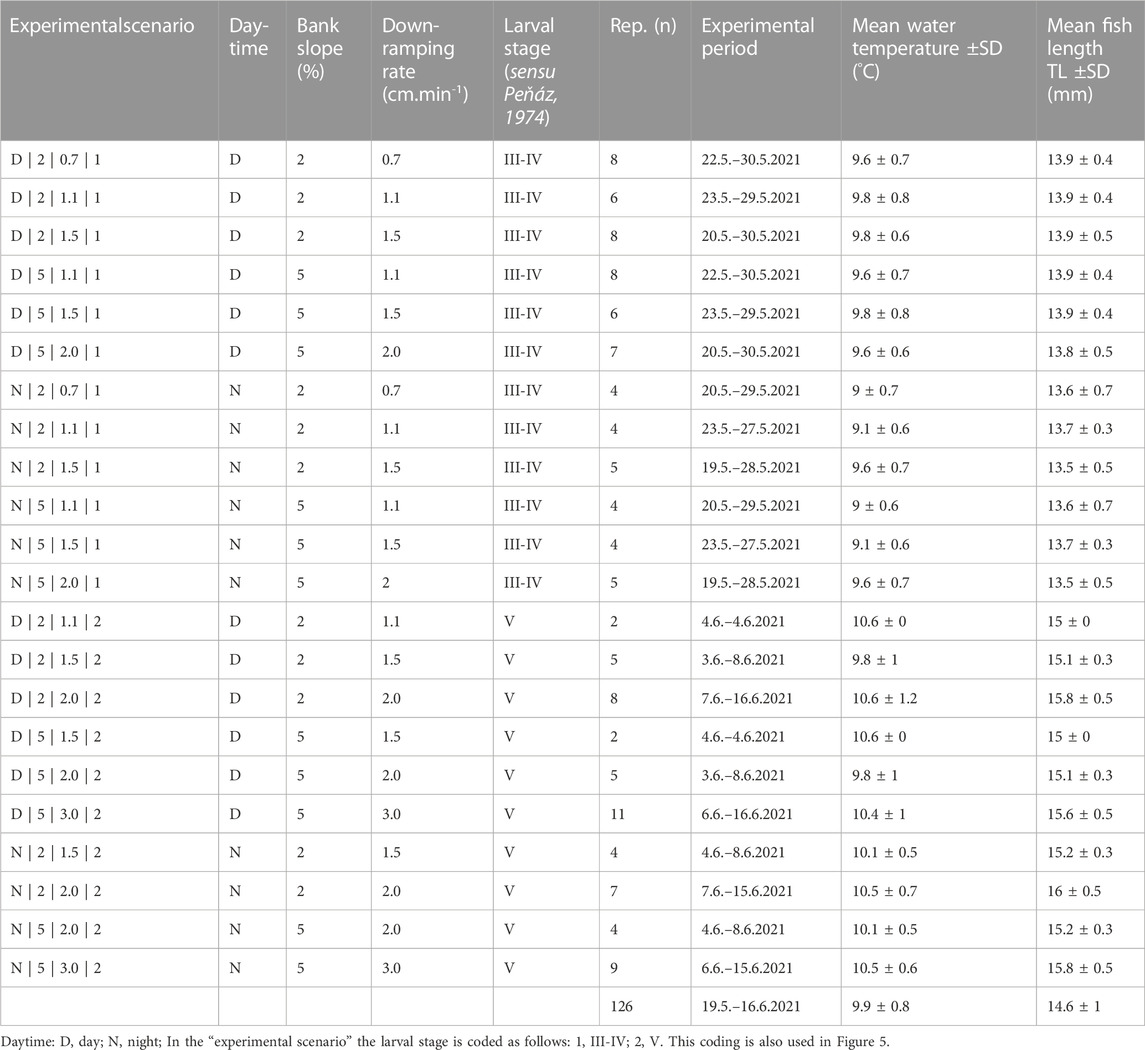
95% of researchers rate our articles as excellent or good
Learn more about the work of our research integrity team to safeguard the quality of each article we publish.
Find out more
CORRECTION article
Front. Environ. Sci. , 09 October 2023
Sec. Freshwater Science
Volume 11 - 2023 | https://doi.org/10.3389/fenvs.2023.1302317
This article is part of the Research Topic Hydropower: from Ecology to Policy View all 9 articles
This article is a correction to:
Stranding of larval nase (Chondrostoma nasus L.) depending on bank slope, down-ramping rate and daytime
 Simon Führer1*
Simon Führer1* Daniel S. Hayes1
Daniel S. Hayes1 Thomas Hasler1
Thomas Hasler1 David R. M. Graf1
David R. M. Graf1 Elora Fauchery2
Elora Fauchery2 Daniel Mameri3
Daniel Mameri3 Stefan Schmutz1
Stefan Schmutz1 Stefan Auer1
Stefan Auer1A Corrigendum on Führer S, Hayes D, Hasler T, Graf D, Fauchery E, Mameri D, Schmutz S and Auer S (2022),
Stranding of larval nase (Chondrostoma nasus L.) depending on bank slope, down-ramping rate and daytime
. Front. Environ. Sci. 10:966418. doi: 10.3389/fenvs.2022.966418
In the published article, there was an error in Table 1 as published. In the column “Experimental period” the date/year is incorrectly indicated as 2022 instead of 2021. The corrected Table and its caption, Overview of the experimental scenarios with the number of independent replicates (n) used for statistical analysis dependent on tested parameters: daytime, bank slope, down-ramping rate, larval stage, appear below.

TABLE 1. Overview of the experimental scenarios with the number of independent replicates (n) used for statistical analysis dependent on tested parameters: daytime, bank slope, down-ramping rate, and larval stage.
A correction has been made to 4 Discussion, Paragraph 5. This sentence previously stated:
“Both studies linked the higher nighttime stranding to increased fish activity during night. However, for 1+ Atlantic salmon (Salmo salar) and 0+ brown trout in autumn (>9°C) almost no difference in stranding between day and night could be detected (Saltveit et al., 2001).”
The corrected sentence appears below:
“Both studies linked the lower nighttime stranding to increased fish activity during night. However, for 1+ Atlantic salmon (Salmo salar) and 0+ brown trout in autumn (>9°C) almost no difference in stranding between day and night could be detected (Saltveit et al., 2001).”
The authors apologize for these errors and state that this does not change the scientific conclusions of the article in any way. The original article has been updated.
All claims expressed in this article are solely those of the authors and do not necessarily represent those of their affiliated organizations, or those of the publisher, the editors and the reviewers. Any product that may be evaluated in this article, or claim that may be made by its manufacturer, is not guaranteed or endorsed by the publisher.
Keywords: flow ramping, young-of-the-year, experimental flumes, storage hydropower, hydro-peaking, river restoration
Citation: Führer S, Hayes DS, Hasler T, Graf DRM, Fauchery E, Mameri D, Schmutz S and Auer S (2023) Corrigendum: Stranding of larval nase (Chondrostoma nasus L.) depending on bank slope, down-ramping rate and daytime. Front. Environ. Sci. 11:1302317. doi: 10.3389/fenvs.2023.1302317
Received: 26 September 2023; Accepted: 29 September 2023;
Published: 09 October 2023.
Edited and reviewed by:
Riccardo Fornaroli, University of Milano-Bicocca, ItalyCopyright © 2023 Führer, Hayes, Hasler, Graf, Fauchery, Mameri, Schmutz and Auer. This is an open-access article distributed under the terms of the Creative Commons Attribution License (CC BY). The use, distribution or reproduction in other forums is permitted, provided the original author(s) and the copyright owner(s) are credited and that the original publication in this journal is cited, in accordance with accepted academic practice. No use, distribution or reproduction is permitted which does not comply with these terms.
*Correspondence: Simon Führer, c2ltb24uZnVlaHJlckBib2t1LmFjLmF0
Disclaimer: All claims expressed in this article are solely those of the authors and do not necessarily represent those of their affiliated organizations, or those of the publisher, the editors and the reviewers. Any product that may be evaluated in this article or claim that may be made by its manufacturer is not guaranteed or endorsed by the publisher.
Research integrity at Frontiers

Learn more about the work of our research integrity team to safeguard the quality of each article we publish.